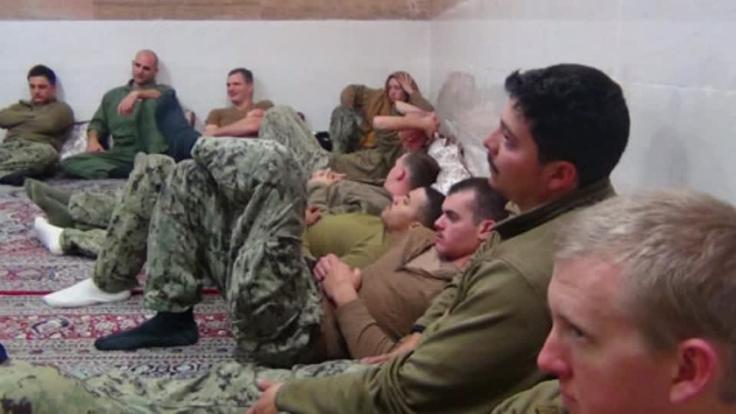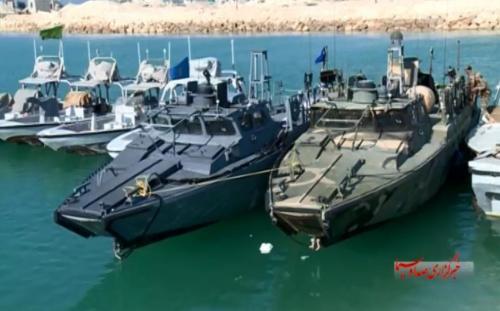
In its first official account of Iran’s seizure and subsequent release of 10 US sailors in the Persian Gulf, the US Navy said Monday the only items found missing from their two recovered boats were SIM cards for two satellite phones.
This would not have had military significance, so the SIM (Subscriber Identity Module) cards might simply have been stolen by a member of the Pas-daran to get some free phone time.
But key questions, such as why the sailors deviated from their planned route to enter Iranian territorial waters, remain unanswered in the account released by the US Central Command.

US Defense Secretary Ashton Carter said last week the boat crews had “misnavigated.” He did not say how that mistake happened and the latest report sheds no light on that key issue.
The timeline released Monday said the US sailors were not mistreated during less than 15 hours in Iranian hands.
The sailors were traveling in small armed vessels known as riverine command boats, headed from Kuwait to Bahrain, which is the headquarters of the Navy’s Fifth Fleet.
“The planned transit path for the mission was down the middle of the Gulf and not through the territorial waters of any country other than Kuwait and Bahrain,” the account said.
Along the approximately 300-mile journey they were to have refueled once by linking up with a US Coast Guard vessel, Monomoy, in international waters.
The timeline said that approximately 10 minutes after the scheduled refueling, Central Command’s naval headquarters at Bahrain received a report that the boats’ crewmembers were being questioned by Iranians.
About 19 minutes later, the naval headquarters “was advised of degraded communications with” the two boats, the account said. After an additional 26 minutes, the naval headquarters was notified of a total loss of communications with the boats.
A large-scale search-and-rescue mission was undertaken at that point, but it is not clear whether the Americans had by this time already been taken ashore on Farsi Island.
Central Command’s naval headquarters at Bahrain attempted to contact Iranian military units operating near Farsi Island by using marine radio to broadcast information about the search-and-rescue operation, including the fact that helicopters would be looking in Iranian territorial waters.
Separately, the US notified Iranian coast guard units via telephone. Some hours later, about four hours after the US first heard that the sailors were being questioned by Iranians, the cruiser USS Anzio received word from the Iranians that the sailors were in Iranian custody. The Iranians described the 10 as “safe and healthy,” according to the US account.
In the succeeding hours, there were conflicting reports about what caused the sailors to stray off course. Monday’s official account did not explain the reason. It said only that the crews “deviated” from their planned course. It made no reference to the navigation error cited by Carter last week.
“At some point one [of the two boats] had indications of a mechanical issue in a diesel engine which caused the crews to stop and begin troubleshooting,” the account said. Because the boats were traveling together, the other boat also stopped. At this point they were in Iranian territorial waters, “although it’s not clear the crew was aware of their exact location,” it added.
While the boats were stopped and the crew was trying to assess the mechanical problem, Iranian boats approached. First to arrive were two small Iranian craft with armed personnel aboard. Soon after, they were joined by two more Iranian military vessels. A verbal exchange ensued between the Iranians and Americans, but there was no gunfire.
Armed Iranian military personnel then boarded the US boats while other Iranian personnel aboard other armed vessels monitored them. At gunpoint, the US boats and their crews were escorted to a small port at Farsi Island, where the Americans went ashore and were detained, the account said.






















